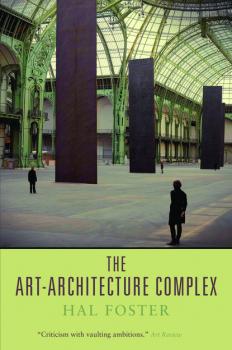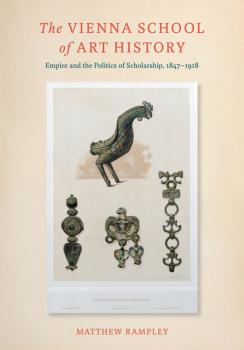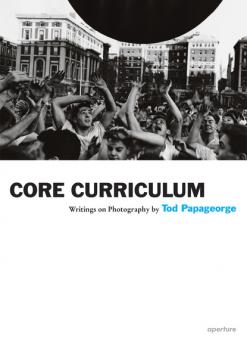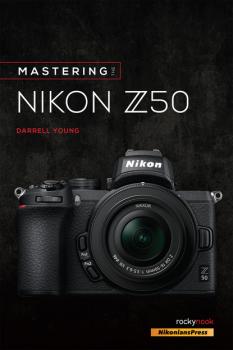ТОП просматриваемых книг сайта:
Изобразительное искусство, фотография
Различные книги в жанре Изобразительное искусство, фотография, доступные для чтения и скачиванияАннотация
A leading art theorist analyses the global style in art and architecture Hal Foster, author of the acclaimed Design and Crime, argues that a fusion of architecture and art is a defining feature of contemporary culture. He identifies a “global style” of architecture—as practiced by Norman Foster, Richard Rogers and Renzo Piano—analogous to the international style of Le Corbusier, Gropius and Mies. More than any art, today’s global style conveys both the dreams and delusions of modernity. Foster demonstrates that a study of the “art-architecture complex” provides invaluable insight into broader social and economic trajectories in urgent need of analysis.
Аннотация
The “biennale culture” now determines much of the art world. Literature on the worldwide dissemination of art assumes nationalism and ethnic identity, but rarely analyzes it. At the same time there is extensive theorizing about globalization in political theory, cultural studies, postcolonial theory, political economy, sociology, and anthropology. Art and Globalization brings political and cultural theorists together with writers and historians concerned specifically with the visual arts in order to test the limits of the conceptualization of the global in art. Among the major writers on contemporary international art represented in this book are Rasheed Araeen, Joaquín Barriendos, Susan Buck-Morss, John Clark, Iftikhar Dadi, T. J. Demos, Néstor García Canclini, Charles Green, Suman Gupta, Harry Harootunian, Michael Ann Holly, Shigemi Inaga, Fredric Jameson, Caroline Jones, Thomas DaCosta Kaufmann, Anthony D. King, Partha Mitter, Keith Moxey, Saskia Sassen, Ming Tiampo, and C. J. W.-L. Wee. Art and Globalization is the first book in the Stone Art Theory Institutes Series. The five volumes, each on a different theoretical issue in contemporary art, build on conversations held in intensive, weeklong closed meetings. Each volume begins with edited and annotated transcripts of those meetings, followed by assessments written by a wide community of artists, scholars, historians, theorists, and critics. The result is a series of well-informed, contentious, open-ended dialogues about the most difficult theoretical and philosophical problems we face in rethinking the arts today.
Аннотация
Matthew Rampley’s The Vienna School of Art History is the first book in over seventy-five years to study in depth and in context the practices of art history from 1847, the year the first teaching position in the discipline was created, to 1918, the collapse of Austria-Hungary. It traces the emergence of art history as a discipline, the establishment of norms of scholarly inquiry, and the involvement of art historians in wider debates about the cultural and political identity of the monarchy. The so-called Vienna School plays the central role in the study, but Rampley also examines the formation of art history elsewhere in Austria-Hungary. Located in the Habsburg imperial capital, Vienna art historians frequently became entangled in debates that were of importance to art historians elsewhere in the Empire, and Rampley pays particular attention to these areas of overlapping interest. He also analyzes the methodological innovations for which the Vienna School was well known. Rampley focuses most fully, however, on the larger political and ideological context of the practice of art history—particularly the way in which art-historical debates served as proxies for wider arguments over the political, social, and cultural life of the Habsburg Empire.
Аннотация
Words Without Pictures was originally conceived by curator Charlotte Cotton as a means of creating spaces for discourse around current issues in photography. Every month for a year, beginning in November 2007, an artist, educator, critic or curator was invited to contribute a short unillustrated essay about an aspect of emerging photography. Each piece was available on the Words Without Pictures website for one month and was accompanied by a discussion forum focused on its specific topic. Over the course of its month-long «life,» each essay received both invited and unsolicited responses from a wide range of interested parties. All of these essays, responses and other provocations are gathered together here. Previously issued as a print-on-demand title, we are pleased to present Words Without Pictures to the trade for the first time as part of the «Aperture Ideas» series. The contributors are Amy Adler, George Baker, Christopher Bedford, Walead Beshty, Sarah Charlesworth, Charlotte Cotton, John Divola, Shannon Ebner, Jason Evans, Harrell Fletcher, Paul Graham, Leslie Hewitt, Darius Himes, Soo Kim, Sze Tsung Leong, Miranda Lichtenstein, Sharon Lockhart, Allan McCollum, Kevin Moore, Carter Mull, Marisa Olson, Arthur Ou, Anthony Pearson, Michael Queenland, Allen Ruppersberg, Alex Slade, A.L. Steiner, Penelope Umbrico, James Welling, Charlie White, Mark Wyse and Amir Zaki.
Аннотация
Core Curriculum: Writings on Photography is the long-awaited collection of essays, reviews and lectures by Tod Papageorge, one of the most influential voices in photography today. As a photographer and the Walker Evans Professor of Photography at the Yale University School of Art, Papageorge has shaped the work and thought of generations of artist-photographers, and, through his critical writings—some of which have gained a cult following through online postings—he has earned a reputation as an unusually eloquent and illuminating guide to the work of many of the most important figures in twentieth-century photography. Among the artists Papageorge discusses in this essential volume are Eugène Atget, Brassaï, Robert Frank (with Walker Evans), Robert Adams and his close friend Garry Winogrand. The book also includes texts that examine the more general questions of photography's relationship to poetry, and how the evolution of the medium's early technologies led to the twentieth-century creation of the artist-photographer. Among the previously unpublished pieces in Core Curriculum are an unfinished poem written in response to Susan Sontag's On Photography , a profile of Josef Koudelka and a commencement speech delivered at the Yale School of Art in 2004. Core Curriculum also includes a number of interviews with this esteemed photographer/teacher/author, ranging in topic from his own photographic work and background in poetry to his energetic observations on the art of photography.
Аннотация
In <i>Bending the Frame</i>, Fred Ritchin–Professor of Photography & Imaging at New York University's Tisch School of the Arts, and author of <i>After Photography</i>–examines the complex relations between social justice and photojournalism in today's oversaturated political and media climates. <br><br>Is visual journalism even effective at all, given the ease with which so many of us can simply record events? And how can the impact of iconic images from the Civil Rights Movement or the Vietnam War be compared to, say, the consequences of leaked images from Abu Ghraib? Do changes in strategy imply changes in accountability and responsibility for visual journalism as a whole? <br><br>Ritchin intends his discussion—which ranges across new media but also includes uses of video as well as a wide range of books and exhibitions—to provide critical tools with which to approach the various efforts of today's visual (and «citizen») journalists and documentary photographers. He also examines the historical uses of photography and related media to inspire social change, the better to pose the critical question that lies at the heart of his book: How can images promote new thinking and make a difference in the world?
Аннотация
Mastering the Nikon Z50 by Darrell Young provides a wealth of experience-based information and insights for owners of Nikon's new mirrorless Z50 camera. Darrell is determined to help the user navigate past the confusion that often comes with complex and powerful professional camera equipment. This book explores the features and capabilities of the camera in a way that far surpasses the user’s manual. It guides readers through the camera features with step-by-step setting adjustments; color illustrations; and detailed how, when, and why explanations for each option. Every button, dial, switch, and menu configuration setting is explored in a user-friendly manner, with suggestions for setup according to various shooting styles. Darrell’s friendly and informative writing style allows readers to easily follow directions, while feeling as if a friend dropped in to share his knowledge. The information in this book goes beyond the camera itself and also covers basic photography technique.
Аннотация
As presented by Oxford University's Museum of the History of Science, Steampunk is rooted inthe aestetics of Victorian technology. Yet it is not a nostalgic recreation of a vanished past: its deveices are both imaginative and contemporary. The Steampunk exhibition, curated by Art Donovan, revealed the many possible responses to Steampunk's characteristics preoccupation with the historical and the contemporary, the mechanical and the fanciful. In imagining a Victorian future that has not come to pass, Steampunk artists cast an oblique light ont he present. But their unrealized «futures» are more celebration than commentary. Steampunk revels in the ingenuity and absurdity of the mechanisms produced and the unqualified pleasure increation. It is only fitting that the world's first museum exhibition of genuine Steampunk art premiered at the Oxford University Museum of the History of Science, which houses the world's greatest collection of important scientific artifacts and devices. The popular Steampunk exhibition ran from October 2009 to February 2010, featured the work of 18 international Steampunk artists, and drew more than 70,000 visitors to the museum.
Аннотация
The 20th century was a rich and influential period of beautiful, innovative design and many classics from that era have influenced and inspired modern designers. «Collectables: 20th-Century Classics» features more than 90 of the most desirable and iconic pieces from the last century. Beautifully illustrated and organized by category (furniture, household, lighting, glass and ceramics) each entry has: a double-page spread, featuring a short essay on the classic under discussion with an accompanying photograph of that object; top tips on what to look out; a price guide; and, key websites to direct the reader on where best to make a purchase or pick up a bargain. Clear and concise, this book provides all the information you need to make an informed decision when investing in a piece of classic design, whether it be an Arne Jacobsen Egg chair, a Clarice Cliff tea cup or a Poul Henningsen PH lamp. This gorgeous book is a must for anyone interested in style, design or interiors.
Аннотация
Zenspiration dangles are unique patterns that add interest and texture to any design. Gifted calligrapher and designer Joanne Fink shares her fun and relaxing techniques for adding dangle patterns to your drawings. Joanne demystifies the patterning process, and shows how simple it is to create richly textured dangles by breaking down the design into component parts. Whether you like to journal, draw, or doodle, you'll find intriguing ideas here for crafting, designing, and decorating with dangle patterns.










